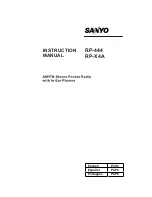
Functional
Description
ET
System
electronic
GmbH
7
ATE
‐
Unit
An
ATE
unit
has
no
front
panel.
It
can
be
controlled
via
analog
interface
(page
26
ff)
or
via
universal
interface
(page
11
ff).
Example
to
control
the
LAB/HP
over
the
universal
interface:
Connect
the
device
to
the
RS232
port
(Page
25
ff,
default
parameter
9600Baud,
8
Data
bits,
1
Stop
bit,
no
parity,
no
handshake).
Start
a
terminal
program
(for
example
TerraTermPro).
Type
follow
commands:
*IDN?
(The
LAB/HP
will
response
his
Id
string)
OVP,100
(Set
over
voltage
protection
to
100V,
no
response)
UA,10
(Set
output
voltage
to
10V,
no
response)
IA,1
(Set
output
current
to
1A,
no
response)
SB,R
(Enable
the
output,
no
response)
MU
(Read
the
actual
output
voltage)
Configuration
of
the
AI
interface
via
digital
interface:
Syntax:
AI[,{5|10}[,{UI|UIP}[,<Filterlevel>]]]
Parameter:
5,
10
5V
‐
or
10V
‐
Mode
IP,
UIP
UI
‐
mode
or
UIP
‐
Mode
Filterlevel
range
of
values
0..10
Examples:
AI,10
AI,5,UIP
AI,10,UI,8
The
changes
are
saved
permanently.
Control
via
analog
interface:
Connect
the
AI
interface
like
the
wiring
diagram
on
page
27.
Close
the
“Extern
control
switch”.
The
adjustment
of
set
points
and
the
selection
of
an
operation
mode
are
performed
via
console
(
Front
Panel
Operation
),
interface
(
Universal
Interface
)
or
analog/digital
IO
(
Ext.
Control:
AI
‐
Interface
).
In
order
of
priority,
commands
which
have
been
sent
by
interface
come
first,
by
analog/digital
‐
IO
come
second
and
by
keyboard
come
third.
For
example,
if
the
interface
specifies
the
set
point,
the
corresponding
values
will
be
sent
‐
irrespective
of
other
settings
‐
to
the
output.
Another
easy
way
to
automate
functions
is
offered
by
script
control
(
Script
Control
).
A
list
of
commands
is
saved
to
the
script
memory
and
enables
the
user
to
change
the
chronological
sequence
of
certain
settings.
The
script
memory
can
be
programmed
via
memory
card
or
digital
interface.
Measurement
values
of
the
latest
output
data
are
permanently
available
at
all
interfaces.
Therefore,
the
present
output
voltage
can
be
read
from
the
display
or
via
digital
interface,
while
the
control
of
the
unit
is
carried
out
via
analog/digital
IO.












































